Learn How To Create Homeowner Statements Automatically In Clearing
Learn to create owner statements in Clearing and keep homeowners updated on their assets.
August 31, 2023
Benjamin
.png)
Property managers who oversee multiple Short-Term Rental properties on behalf of homeowners face various challenges when they have to keep homeowners updated on their assets. To ensure financial transparency, property managers must create and share owner statements for their homeowner’s Short-Term Rental and vacation rental assets.
Most property management platforms aren’t able to create automated monthly statements for homeowners as they can’t track expenses accurately and from multiple sources (credit cards, bank accounts, etc). In such cases, a property manager has to create homeowner Short-Term Rental assets statements manually. This requires both time and effort as the property manager must add all transaction details and ensure all monetary values are accurate. Such requirements limit a property manager’s ability to effectively collaborate with homeowners to ensure financial transparency.
Using Clearing, on the other hand, helps property managers keep homeowners updated in a simple and intuitive way. Clearing’s exciting new feature allows property managers to create Short-Term Rental and vacation rental homeowner statements with ease. When creating owner statements, Clearing automatically pulls transaction details from platforms such as Airbnb, Stripe, their property management software, and more.
These details are then added to the owner statement, which a property manager can export in a PDF format. Property managers can also share read-only access to Clearing for their homeowners to access owner statements directly. These statements show all revenues and expenses for the Short-Term Rental asset and help property managers collaborate with homeowners more intuitively.
Creating Owner Statements In Clearing
Clearing has made it easier for you to create owner statements for your Short-Term Rental business by automating the process and making sure it can be completed in seconds. To create owner statements in Clearing, follow the steps below:
Step 1: Signup or Login
To create owner statements, first, you must log in to your Clearing account. Enter your credentials and click the “Log In” button to proceed. If you don’t have a Clearing account, and would like to get started, book a demo today!

Step 2: Access The Reporting Dashboard
After logging into your account, the first thing you’ll need to do is access the “Owner Statement” menu option. This can be done by clicking the appropriate option in the left-hand side menu.
.png)
Step 3: Select A Homeowner and Start Owner Statement
Add or choose a homeowner.
To proceed, click on that name field and select the owner’s name from the drop-down list.

To edit the homeowner details, click on the button next to the name selection list.
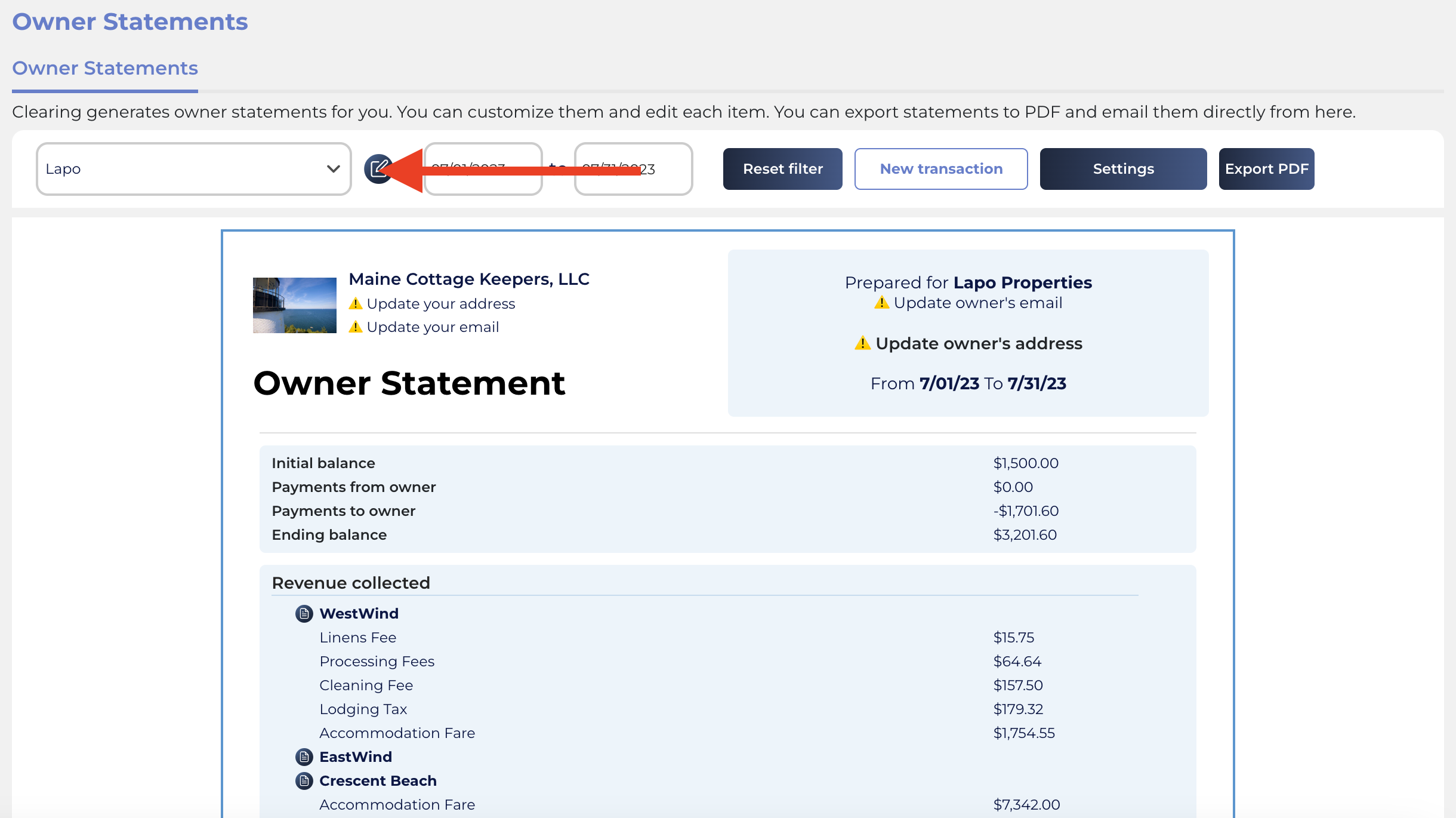
Now, adjust the information as desired.
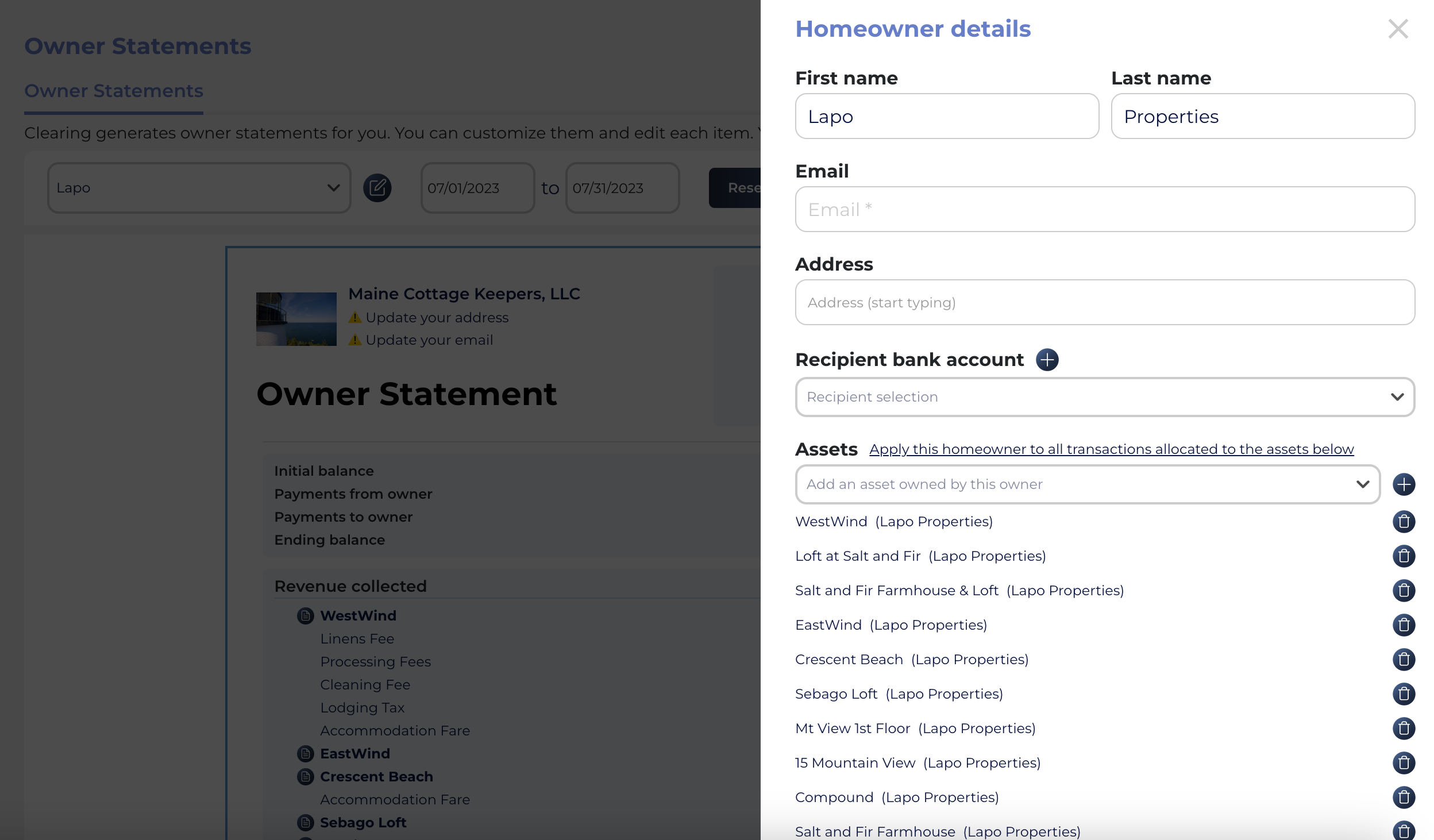
Step 4: Choosing The Date Range
Once you have chosen which homeowner you want to generate an owner statement for, you will need to define a custom date range for the statement. To proceed, click the “from” and “to” date fields and choose the appropriate dates.
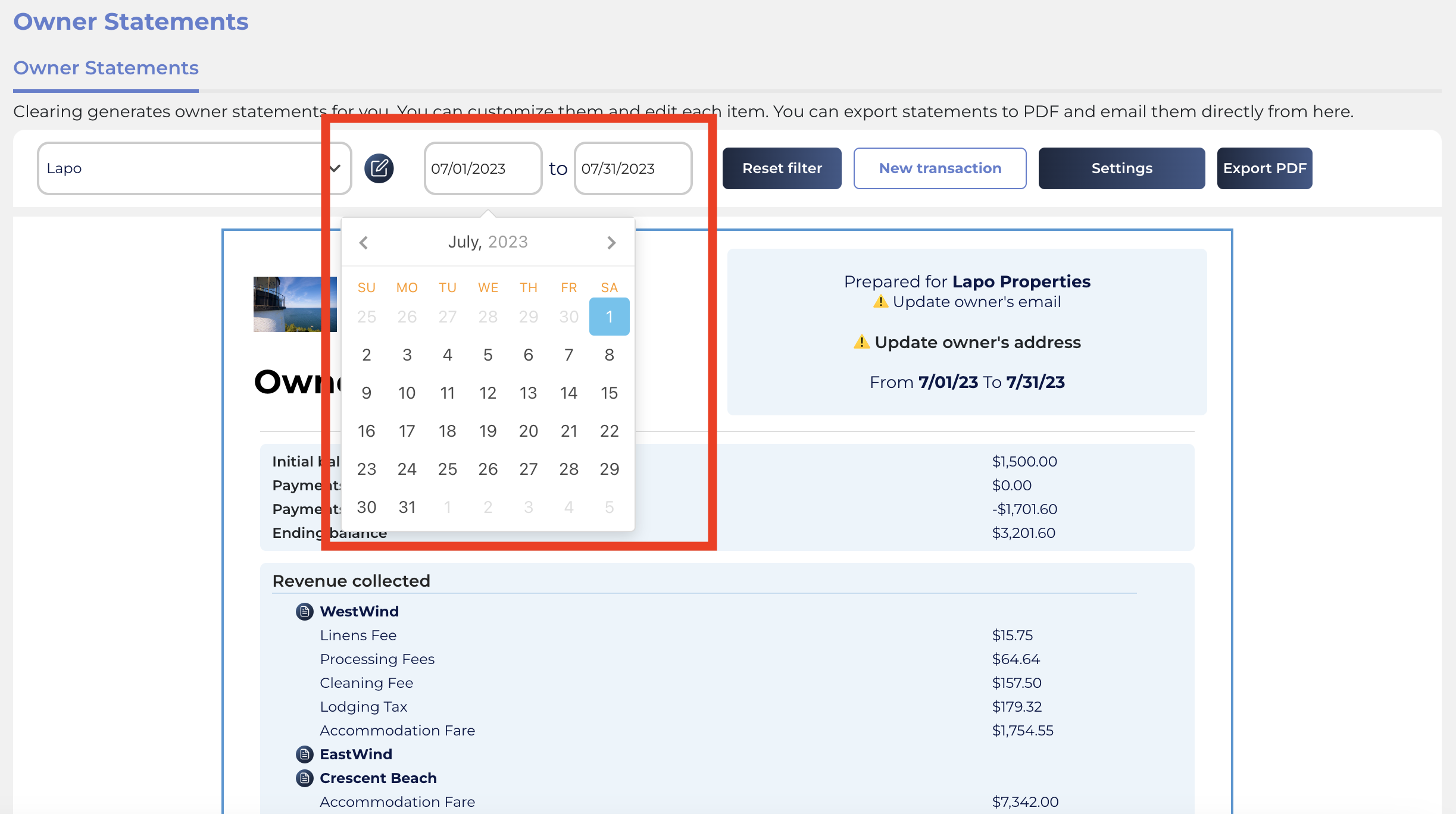
Now the homeowner statement will be generated or updated as per the defined date range.

Step 5: Understanding The Owner Statement
The homeowner statement you generate will contain different information about you, the homeowner, and the properties you manage for them. Your business name, address, and email will be displayed at the top left corner of the statement. Please note that if you haven’t entered your details, you need to access your account settings and do so for them to appear on the statement.
.png)
The owner’s business name, address, and email will appear at the top right corner of the statement.
.png)
The next section of the owner statement will provide information about the initial balance, payments made to/from the owner, and the ending balance. You can also add the minimum balance per sub-balances, if you maintain a minimum balance at all times. This will be done in the “Settings” of the owner statement.

The next two sections of the owner statement will provide information about the revenues and expenses for each property in the specified date range.

Property owners that have login capabilities through our homeowner portal can also click an individual property to see the granular details of each transaction making up the totals. This is read-only for homeowners through our owner portal, so you don’t need to worry about them making any changes.
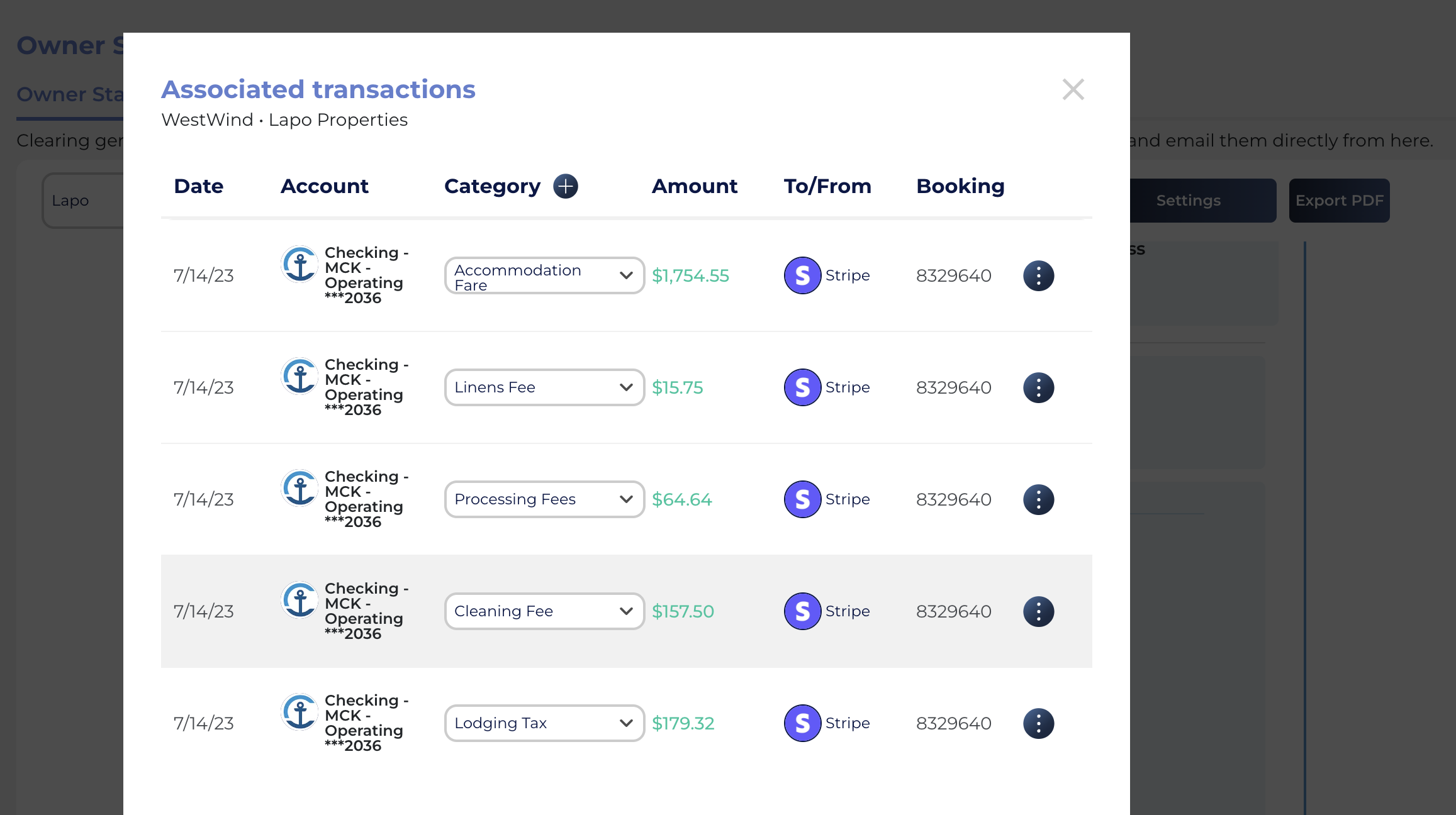
Step 6: Adding Commission Details
You can also add commission details to the owner statements.
To do this, click on the “Settings” options.

Turn on “Show Commission”.
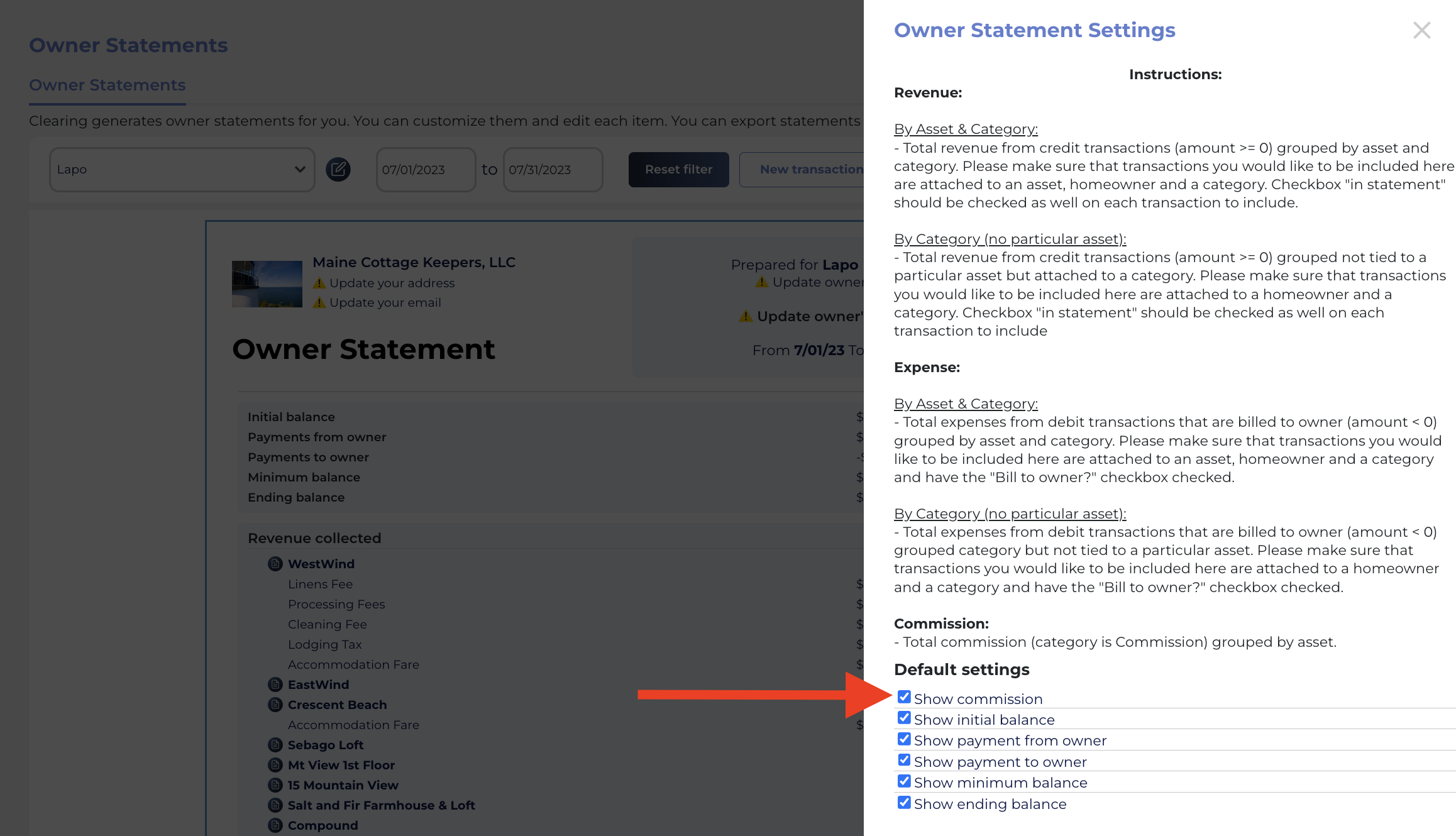
Step 7: Adding A New Transaction
If you need to add a new transaction, you can do that by clicking the “New Transaction” option.

After that, you will need to provide the required details to add the transaction to your owner statement.
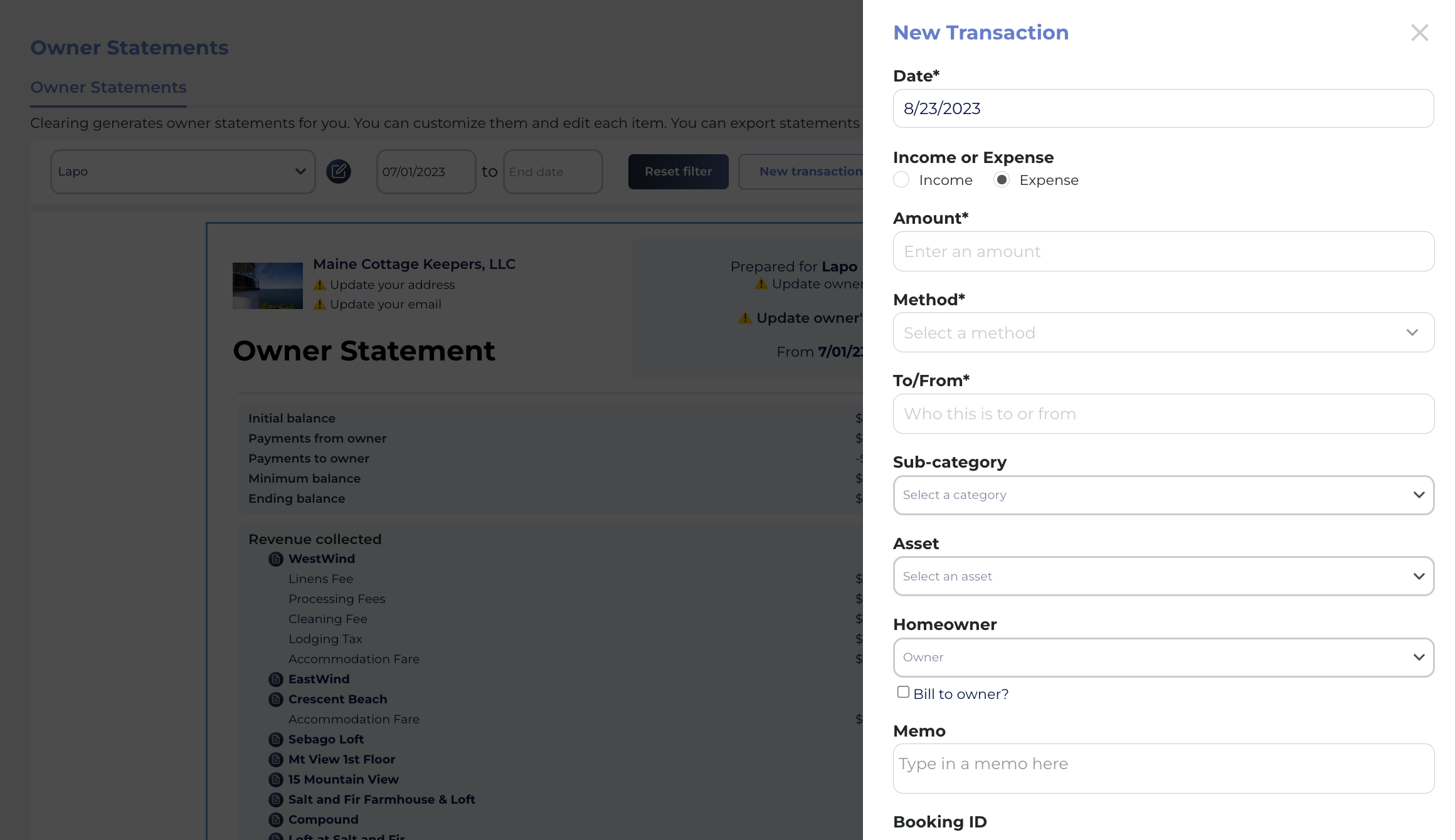
Step 8: Owner Statement Settings
To see how all the items are generated on the owner statement, you can view our “Settings” menu.

Step 9: Sharing The Owner Statement
And that’s it.
Now all you have to do is click the “Export PDF” option and share the statement with the homeowners via email. Property owners with direct access to Clearing through our owner portal can also see a read-only version of the statement which is specific to their properties. They will then be able to choose custom date ranges as they please.
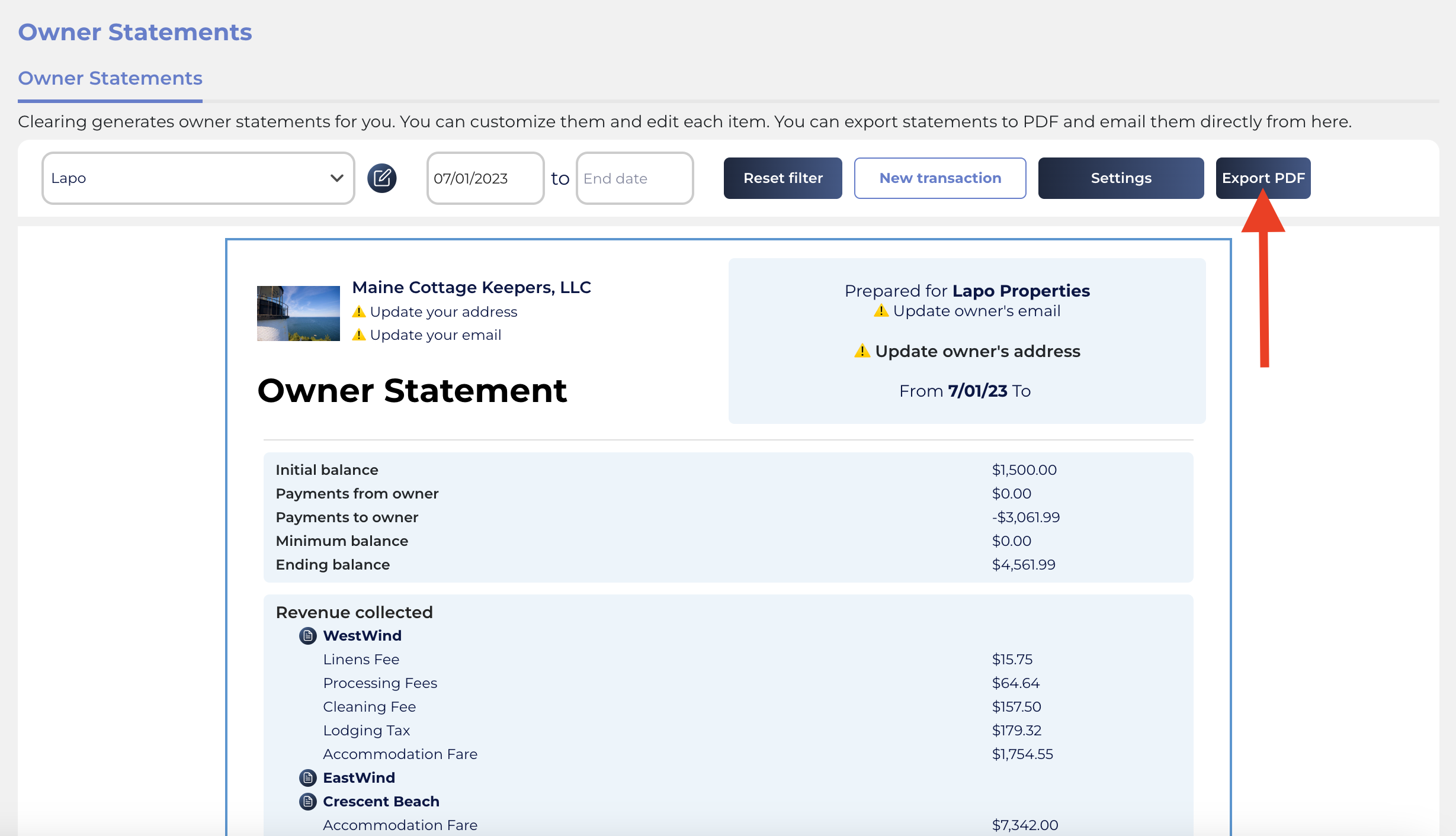
See how effortless it is to enhance homeowner updates and financial transparency?
Don't delay!
Get in touch with us for a free personalized demo and delve deeper into Clearing's capability of generating owner statements for your Short-Term Rental business. Explore how Clearing can redefine your approach to financial transparency.
Also, don't miss out on our insightful knowledge articles, where you'll find the latest tutorials to seamlessly automate your financial management, bookkeeping, and Trust Accounting operations.
Clearing operates as a Financial Technology Company, and it is not a bank.

.png)
.png)
.png)
.png)
%20(1).png)
.png)
.png)
.png)
%20(1).png)
%20(1).png)
%20(1).png)








.jpg)
%20(1).png)
%20(1).png)
%20(2).png)
%20(1).png)

%20(1).png)
%20(1).png)
%20(1).png)



%20(1).png)
%20(1).png)
%20(1).png)
%20(1).png)
%20(1).png)


%20(1).png)
%20(1).png)
%20(1).png)
%20(2).png)
%20(2).png)



%20(2).png)


%20(2).png)
%20(1).png)
.png)


%20(2).png)
%20(2).png)

.jpg)
.png)
.png)
.png)




.png)

.png)
%20(1).png)
.png)

.png)

.png)
.png)
.png)
.png)
.png)
.png)


.png)
.png)
.png)
%20(1).png)
%20(1).png)
%20(1).png)
%20(1).png)
%20(1).png)
.png)
.png)
.png)
.png)
%20(1).png)
.png)
.png)
.png)
.png)
%20(1).png)
.png)